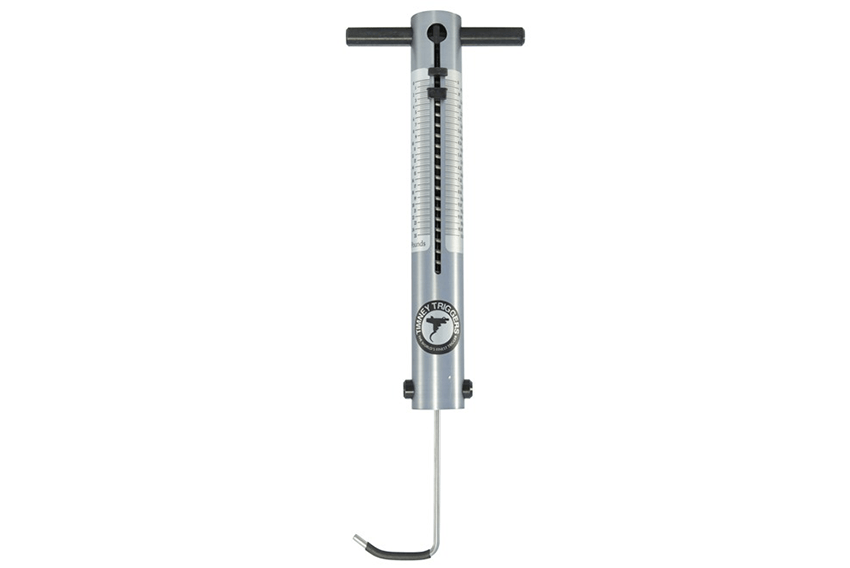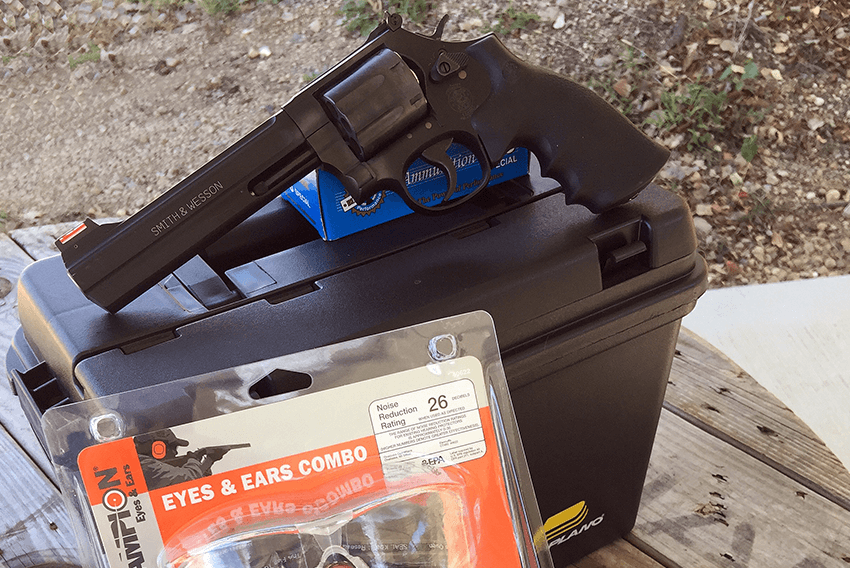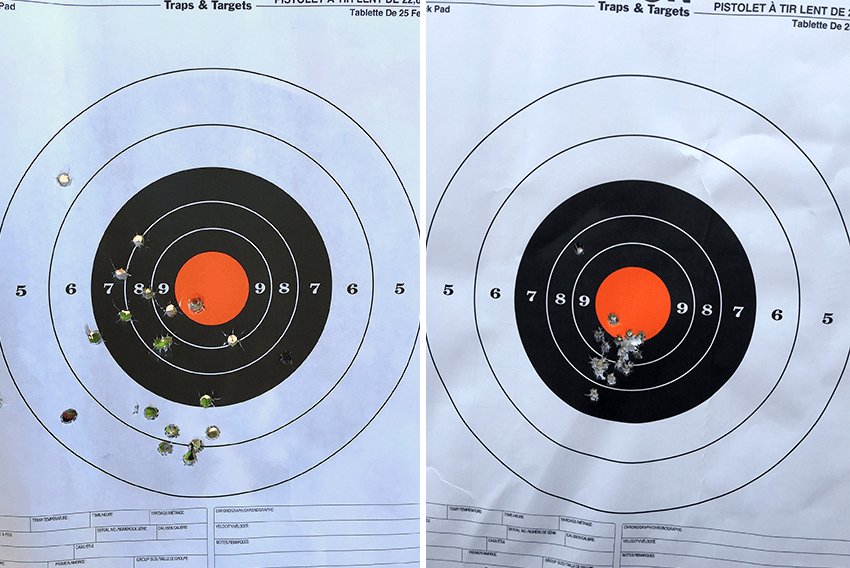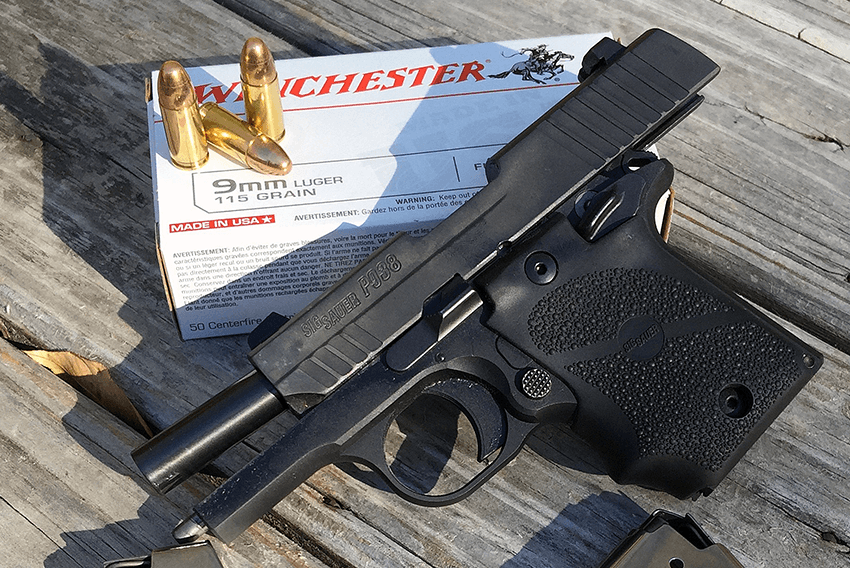
Did you know that your handgun’s trigger has as much or more to do with accuracy as the sights do? Did you know that most triggers can be adjusted to improve their feel and aid in your accuracy? This article will take a look at triggers and answer common questions about the best pull weights, when you should have a trigger adjusted and more.
The “Right” Trigger Pull
There is no definitive or “right” trigger pull. Competition shooters often opt for a trigger as light as two pounds. The average concealed carry gun, on the other hand, may feature a 5½-pound trigger. Law enforcement officers in New York City are required to carry handguns that have a 12-pound trigger, while deputy sheriffs in Los Angeles carry sidearms with 5½-pound triggers. As you can see, there are a lot of options — and that can make it hard to determine what’s right for you and your gun and whether yours requires any adjusting. To help answer these questions for our First Shots readers, I reached out to a well-respected gunsmith, Jim Jones of J&L Gunsmithing. Jones is an accomplished competitor and law enforcement trainer who builds and works on many firearms for law enforcement and members of our elite military Special Forces.

This trigger pull gauge, made by Timney, tells you how much weight it takes to break the trigger and drop the hammer. If you use one of these tools to test your trigger, remember to always do so on an unloaded gun.
According to Jones, the first reason many shooters choose to adjust their trigger with a gunsmith or get a “trigger job” as it’s better known, doesn’t have anything to do with the trigger’s “pull weight.” Pull weight is, as you might suspect, the amount of poundage required to pull the trigger back until it “breaks” and releases the hammer or striker. It turns out that many shooters are happy with the trigger weight but want the trigger pull to be smoothed out to make it more consistent. It is not uncommon for a handgun, out of the box, to feel what most describe as “gritty.” As the trigger is depressed, it feels like it needs a good cleaning to get the sand out, and it can sometimes feel like the trigger is sticking in places as the shooter depresses it through its range of motion. A good trigger job will smooth out this problem to where, when the trigger breaks, it will be crisp like the snap when glass breaks.
Individuals concerned about the performance of their concealed carry guns often ask for this kind of trigger job. Why? Because they are carrying a firearm they may be forced to use to defend their life or that of their loved ones, but are concerned about having a trigger pull weight that is too light under a stressed situation. Thus, a trigger job that does not lighten the trigger weight but offers a smooth pull all the way through will enhance performance without the compromising safety.
Advantages of a Light Trigger
Speaking of a smooth trigger, let’s back up and discuss why a light and/or smooth trigger is advantageous. Let’s say your handgun weighs 40 ounces (2½ pounds). Perhaps your handgun has a heavy, double-action trigger of 12 pounds. That means you have to apply 12 pounds of pressure while trying to steady 2½ to 3-pound (loaded) gun. That much force on the trigger on such a light gun can make it difficult to keep your sights steady on the target. A lighter trigger, then, can improve your ability to hold the gun steady while firing.

This Smith and Wesson Model 386 XL Hunter in .357 Magnum is a fine choice for hunting, plinking or home defense. The frame is constructed from Scandium, making it lightweight, but lighter frames are easier to control with a lighter trigger.
Trigger Creep
“Trigger creep” is commonly referred to as the distance the trigger has to travel after you’ve pulled it almost all the way back but before it breaks and the shot fires. Like a heavy trigger pull, it is considered an accuracy killer. As I said before, when the trigger breaks, it should feel like an icicle or candy cane snapping within the last 1/16-inch of the trigger’s rearward movement. Inside the gun, the sear will drop (the sear is the part of the overall trigger mechanism that holds the hammer or striker back until this point), the hammer will drop and the gun will fire. At that point, if your grip is correct and your sights lined up, you’ll hit your target. However, the longer you have to pull the trigger, especially at the rear of the movement, the more time the sights have to become unaligned and the greater the likelihood you’ll begin to torque the grip, ruining accuracy.
Trigger Stacking
This is not a good thing. “Trigger stacking,” most-often found on double-action triggers, is said to occur when the weight of the trigger pull increases as the shooter pulls the trigger back. Just like bad trigger creep, this can cause you to over-torque the gun in your grip and misalign your sights.
Trigger Reset
The longer the trigger has to travel to fire the gun, the longer the trigger has to travel back forward toward its starting point before you can take your next shot. This decreases your speed performance as a competition shooter. Likewise, it could also mean sacrificing critical fractions of a second in a self-defense situation.

Before and after a quality trigger job performed by a gunsmith. Smoothing out the trigger action and, sometimes, lessening the trigger pull weight can improve accuracy because the shooter will no longer torque the gun, resulting in misaligned sights, with a trigger that is rough or too heavy.
What Does This All Mean for You?
All this talk about trigger pull boils down to the shooter and why you’re shooting in the first place: accuracy! If you are a competition shooter, your goal is accuracy. If forced to use your firearm in a self-defense situation, your goal is accuracy. If you are shooting tin cans in the back pasture, your goal is still accuracy. And, quite simply, you are more likely to be more accurate with a lighter trigger. That is a true fact whether you are a new shooter or a seasoned veteran.
I have a Dremel Tool. Can I Do My Own Trigger Job?
Yes and no, but certainly not with a Dremel tool. The difficulty of performing a trigger job varies by the firearm. The parts can be expensive and have to be cut at appropriate and exacting angles. This is typically done on CNC machines. There are trigger kits one can buy for many guns. In these kits, the parts have already been cut. If you have the knowledge to properly install one of these, fine, but know that you will not be doing a true trigger job. Instead, you will be swapping parts to accomplish the desired results. Now, replacing your own parts may seem like a good idea, if you are mechanically inclined and you have the right information on how to do this. But you’re much better off going to a gunsmith and having him or her do a proper trigger job. During a trigger job, the gunsmith will change the shape or geometry of certain parts. After that those parts are polished, as well as many other parts of the internals. Last, the gunsmith tests the handgun. If something goes catastrophically wrong or a part was cut incorrectly during the work, it is the gunsmith who suffers, not you.
The Dangers of an Improper Trigger Job
A poor trigger job can result in a handgun that performs as a full-auto when fired. This is not only a dangerous condition, it’s one that makes the gun illegal. A bad trigger job can also result in a gun that “slam fires.” When this happens, the force of the slide being released cause the gun to fire even though the trigger was not depressed. Talk about dangerous! Is a few extra dollars for a professional who has likely performed hundreds of trigger jobs really worth the risk of wanting to say you did it yourself? Even if you don’t end up with a gun that functions incorrectly, a poorly done trigger job may actually decrease your gun’s performance, and a bad trigger job can even damage or destroy critical parts that render the gun inoperable.

Carefully weigh your options when deciding whether or not to get a trigger job on a home defense or concealed carry handgun.
Should You Have a Trigger Job Done on Your Handgun?
With new shooters, I often hear, “I’ll get a trigger job when I get better.” Okay, but let’s go back to the beginning of this article. Accuracy improves with a smoother, lighter trigger. Would you learn to race a bicycle that has warped wheels? Quality counts. Your shooting skills will improve faster with a smooth, crisp, light trigger. The process works something like this. Your brain takes a snap shot every time the gun fires. You see the hit or miss and the brain learns. Your brain learns good or bad habits based on the muscle memory and feedback of what works and what does not. The sooner your brain starts getting positive feedback from a certain action, the quicker you’ll improve. Need more? As mentioned before, New York City police reportedly have 12-pound triggers in their Glocks. They also have a 15-percent hit ratio! Contrast that with the Los Angeles Sheriffs shooting single-action five-pound triggers and who have a 51-percent hit ratio. Pretty big difference! Also, according to the FBI, anything heavier than the 5½-pound triggers their handguns are equipped with results in poor performance in shooting under stressful conditions. The bottom line is that as long as a trigger is installed by a professional, worked on to improve smoothness and possibly lighten its weight, and then test-fired for safety before being returned to you, it is no more dangerous than it was before you handed it to the gunsmith — but you might just end up with a wonderfully performing gun that helps improve your accuracy.





